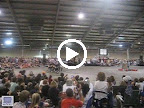I awoke to the wind pounding at my door. Mother Nature is announcing that winter has arrived. However, it is not as though its arrival has not been expected. Over the past few months the days have slowly become shorter and the temperatures have dropped. The gums trees have shed their skin, leaving bare trunks draped in strings of bark. The vibrant colored leaves of the few deciduous trees are now brown litter on the sidewalks and, as I walk the streets of Adelaide, the crunch of my footsteps releases the earthy smell of their decomposing matter.
As I prepare to face my third winter here in Adelaide, I know that it will be very different from my winters back in Albuquerque. Morning temperatures may occasionally near the freezing mark, but I will never find frost on my windows. The day time temperatures will never require more than a light jacket, so my wool winter coat will remain in the closet. Since snow is unheard of in these parts, the only blanket of white outside my doorstep will be on those few calm days when there is no wind, and the bay becomes engulfed by low-lying clouds. However, those days will be few and most days I will find myself battling the Antarctic wind. This wind is ferocious and it turns the bay into a tumultuous body of water. The lulling sound of the calm summer waters is replaced by the pounding of thunderous waves crashing into the shore. It is during the winter months that Mother Nature finds her voice and allows herself to be heard.
With the fast moving winds--the squalls--of the south come the rains. The winter rains of Adelaide are unpredictable in form. They may come as a drizzle, shower or down pour, but they are the defining element of the South Australian winter. Unlike New Mexico, winter in Australia is not a season of hibernation. Instead, it is during the shortest months of the year, below the darkened skies, that life returns to the drought ridden country. It is when the clouds mask the sun and the first drop of rain begin to fall that the dusty and dry landscape once again becomes lush and green. With just the smallest amount of precipitation, plants that had withered and ceased to grow during the hot summer months instantly come back to life. The bright greens of the plants, trees and grasses are speckled with vibrant colored flowers. The contrast of the stark grey sky with the myriad hues remind me of spring; but the constant cut of the antarctic wind keeps me in the present.
rodamientos
13 hours ago























